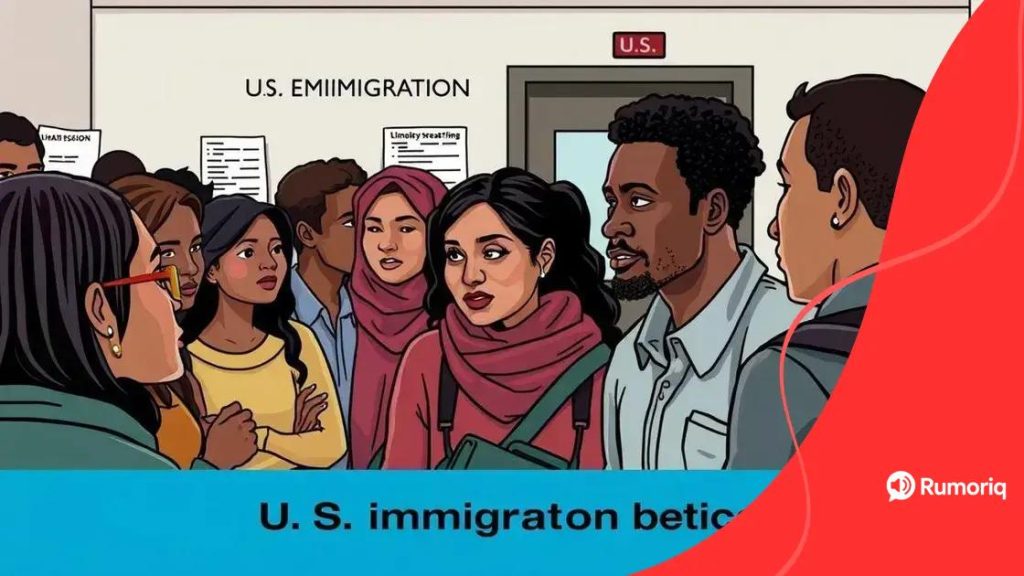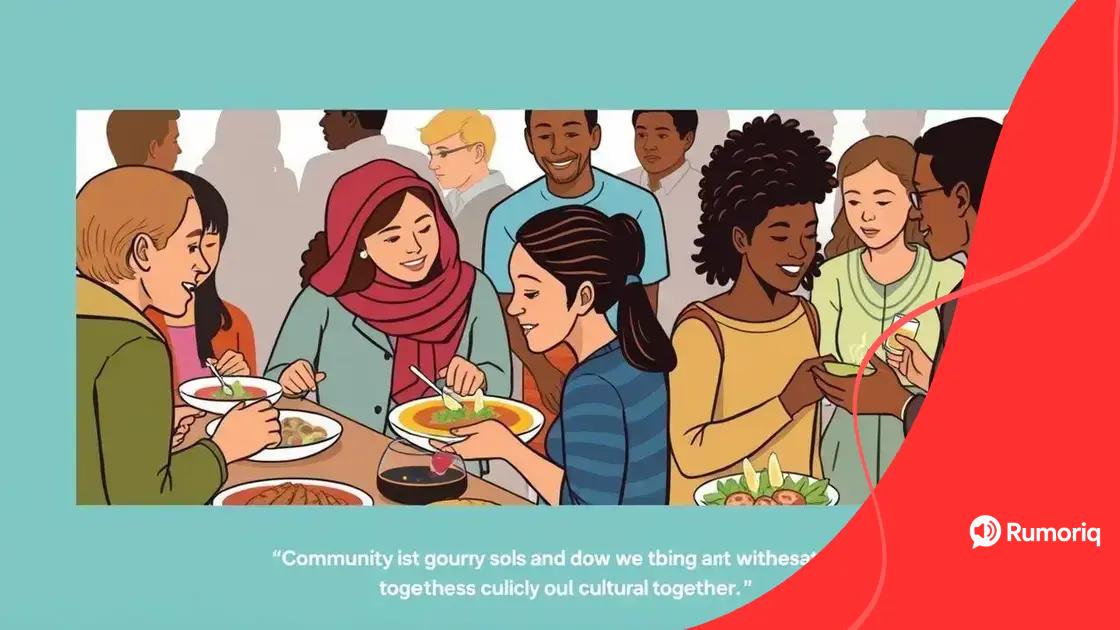Modifications to the United States’ approach to immigration raise questions

Anúncios
Modifications to the United States’ approach to immigration involve changes driven by technology, demographic shifts, and public opinion, impacting policies aimed at enhancing diversity and meeting economic needs.
Modifications to the United States’ approach to immigration are shaping the conversation around rights and policies. Have you considered how these changes affect everyday lives? Let’s delve into this complex topic.
Anúncios
Understanding the current immigration policies
Understanding the current immigration policies in the United States is crucial for grasping the complexities of the system. These policies shape who can enter the country, how long they can stay, and under what circumstances.
Overview of Immigration Policies
U.S. immigration policies have evolved greatly over the years. Specifically, these laws often reflect the nation’s broader societal values and economic needs.
- Policies differ based on visa categories.
- Family reunification is a cornerstone of many immigration laws.
- Work visas allow specific skills to fill gaps in the labor market.
- Refugee and asylum policies respond to humanitarian crises.
Changes in leadership can result in significant adjustments to these policies. For instance, recent reforms aim to balance national security with the need for skilled labor. Critics argue that some policies may be too restrictive and hinder economic growth.
Anúncios
Impact on Immigrants
Current immigration policies have direct effects on millions of people. Navigating the system can be challenging for applicants. Each year, thousands are left waiting for approvals, while others may face legal hurdles.
- Delays in processing can lead to family separation.
- Legal complexities often require expert guidance.
- Certain groups face increased scrutiny during application processes.
Moreover, local communities feel the effects of these policies, as they influence economic dynamics and cultural integration. Communities that embrace diversity can benefit from immigrants contributing to the economy and enriching local culture.
Understanding these policies helps to foster dialogue around immigration. Knowledge is power, especially in discussions that shape future laws and societal attitudes. By engaging with this content, readers can better appreciate the intricate landscape of U.S. immigration.
Key changes in the approach to immigration
Key changes in the approach to immigration have been shaping the landscape of U.S. policies in recent years. These transformations reflect the nation’s response to global events and internal debates about borders and national security.
New Policy Initiatives
Recently, there have been several significant initiatives aimed at reforming the immigration system. By re-evaluating existing laws, lawmakers aim to create a more streamlined process. These initiatives include:
- Enhanced pathways for legal immigration.
- Changes to family reunification policies.
- Increased transparency in visa approval processes.
- New support for asylum seekers and refugees.
Each of these changes highlights a shift towards addressing the needs of individuals seeking to enter the U.S. This new flexibility allows for better adaptation to changing circumstances around the world.
Impact on Communities
The adjustments in immigration policies also have immediate effects on communities. Cities that welcome immigrants often see shifts in demographics and cultural dynamics. As neighborhoods become more diverse, local economies benefit from fresh perspectives and skills.
- More diverse workplaces lead to increased creativity.
- Cultural exchanges enhance local traditions.
- Strong immigrant communities contribute to economic growth.
Additionally, these changes foster dialogue about how immigrants fit into the broader American narrative. Understanding the historical context of these policies can help illuminate why these changes matter today.
As debates continue, recognizing the implications of these key changes is essential for fostering informed conversations about immigration. Staying informed empowers citizens to engage with the ongoing transformations in their communities and society as a whole.
Impact of modifications on communities

The impact of modifications on communities is significant as changes to immigration policies directly affect local populations. As new policies take shape, various communities experience transformations in demographics, economics, and cultural dynamics.
Economic Contributions
With changes in immigration laws, many communities see an influx of immigrants who bring diverse skills and perspectives. This can lead to enhanced economic growth. Local businesses often benefit from the addition of skilled workers in sectors like technology, healthcare, and agriculture.
- New businesses may emerge, driven by immigrant entrepreneurs.
- Workforce diversity can drive innovation and creativity.
- Increased consumer base through a growing population.
These contributions help strengthen local economies and create job opportunities for everyone, highlighting the need for inclusive policies.
Cultural Enrichment
As communities adapt to the influx of immigrants, cultural exchanges flourish. These exchanges enrich local traditions and promote understanding among different groups. Festivals, art, and cuisine thrive when diverse cultures share their heritage.
- Local festivals may celebrate a variety of cultural traditions.
- Cultural diversity enhances community cohesion.
- Educational initiatives can promote cultural awareness.
This cultural mosaic fosters greater appreciation and respect among residents, helping to bridge gaps between various backgrounds.
However, adjustments can present challenges too. Some communities may experience tension as residents adjust to new cultural dynamics. Discussions around integration and cooperation become essential during these transitions. It is crucial for community leaders to facilitate positive dialogue and promote initiatives that encourage cooperation among all residents.
Historical context of immigration in the U.S.
The historical context of immigration in the U.S. reveals the complexities and changes in policies over time. Understanding this history helps explain current debates and attitudes toward immigrants.
Early Waves of Immigration
In the 19th century, waves of immigrants arrived from Europe, seeking better opportunities. Many came for religious freedom, while others fled poverty and conflict. This influx of people began to shape the American landscape significantly.
- Irish immigrants faced hardships due to famine.
- German migrants sought land for farming.
- Italian and Eastern European groups arrived seeking work.
These early settlers played crucial roles in building infrastructure and industries, contributing to the economy and cultural diversity.
Shifts in Policies
As immigration increased, so did concerns about assimilation and national identity. The late 19th and early 20th centuries saw restrictions and quotas implemented in response to economic fears and social tensions. The Chinese Exclusion Act of 1882 is a prominent example, targeting a specific group amid rising racism.
- Immigration quotas were established in the 1920s.
- The Great Depression led to stricter enforcement of immigration laws.
- World War II created both challenges and opportunities for refugees.
Throughout these periods, the U.S. fluctuated between welcoming newcomers and enforcing strict regulations.
Modern Immigration Trends
In recent decades, the landscape has continued to evolve. With global conflicts and economic challenges abroad, the U.S. remains a top destination for many immigrants seeking safety and new opportunities. The challenges faced by these individuals today echo those of earlier generations, as they navigate a complex system.
Recognizing the historical context of immigration helps foster informed discussions about policies and human experiences. By understanding where we came from, it is easier to envision future directions.
Future predictions for immigration policy
Future predictions for immigration policy suggest an evolving landscape that reflects societal needs and global challenges. As discussions continue, various factors influence how these policies will take shape going forward.
Technological Advancements
One major driver of future policies may be technological progress. Innovations in data management and processing could streamline the application process for immigrants. This means faster approvals and better tracking of applicants.
- Use of AI and machine learning to assess applications.
- Improved online resources for immigrants seeking information.
- Integration of biometric data for security and efficiency.
These advancements can lead to a more effective system, benefiting both immigrants and government agencies.
Changing Demographics
As demographics shift within the U.S. and globally, policies will likely adapt to address these changes. The aging population in the U.S. may create demand for younger workers, leading to:
- Increased pathways for skilled workers in key industries.
- Greater emphasis on education and training for immigrants.
- Policies to attract talent from diverse regions.
This could help fill labor shortages and support economic growth, making it essential to welcome newcomers.
Moreover, international events, such as conflicts and climate change, may force governments to reconsider how they respond to refugees and asylum seekers. Balancing humanitarian efforts with national interests will remain a priority.
Public opinion will also play a critical role in shaping future immigration policies. Increased dialogue and education about the benefits of immigration can influence lawmakers to adopt more inclusive measures. Understanding the potential contributions of immigrants can foster a more welcoming environment.
FAQ – Frequently Asked Questions about Future Immigration Policies
What factors will shape future immigration policies?
Future immigration policies will be influenced by technological advancements, changing demographics, public opinion, and economic needs.
How will technology impact immigration processes?
Technology will help streamline applications and approvals, making it easier for immigrants to navigate the system.
What demographic changes should we expect?
An aging population may lead to increased demand for younger, skilled workers in various industries.
Why is public opinion important in shaping immigration policy?
Public opinion can influence lawmakers, encouraging more inclusive policies and fostering a better understanding of the benefits of immigration.